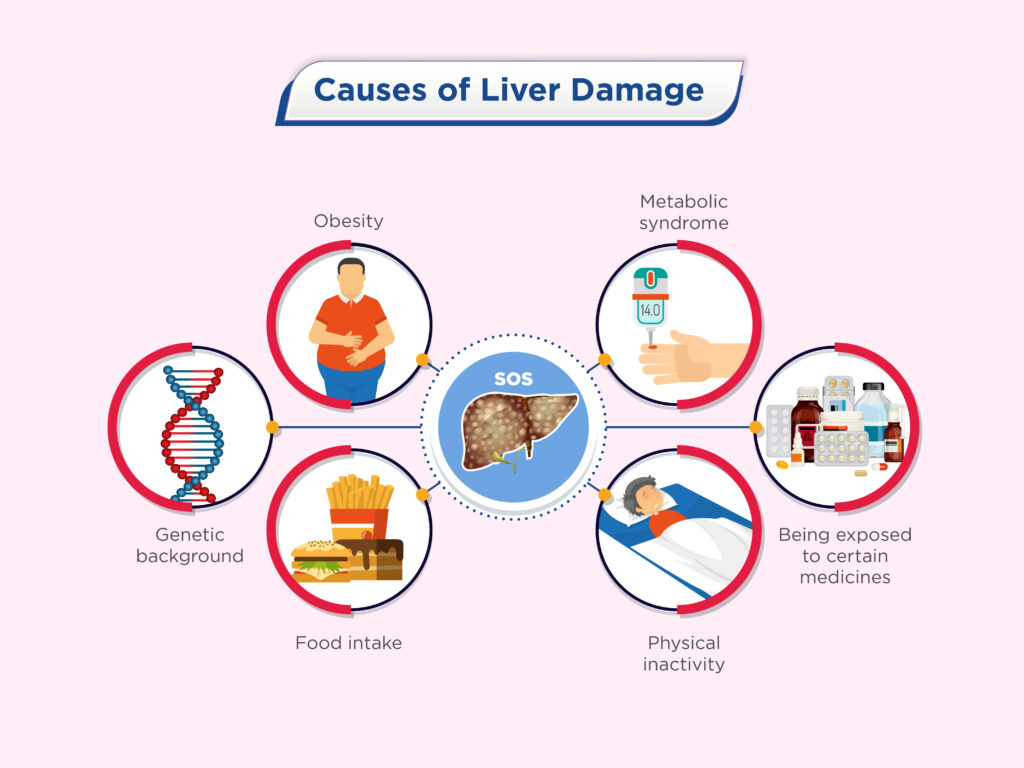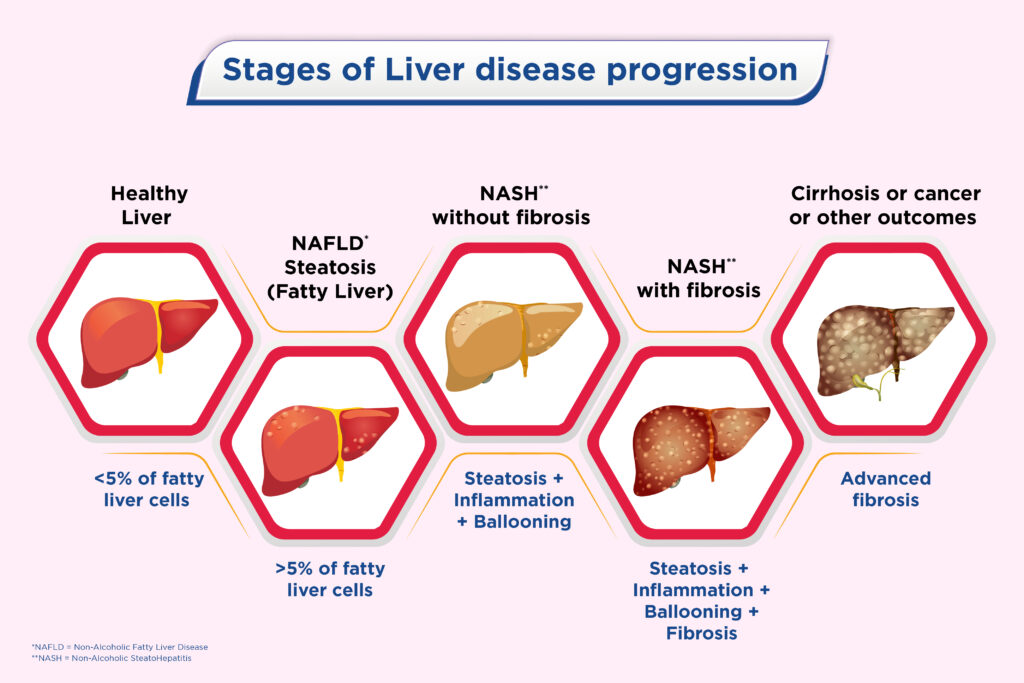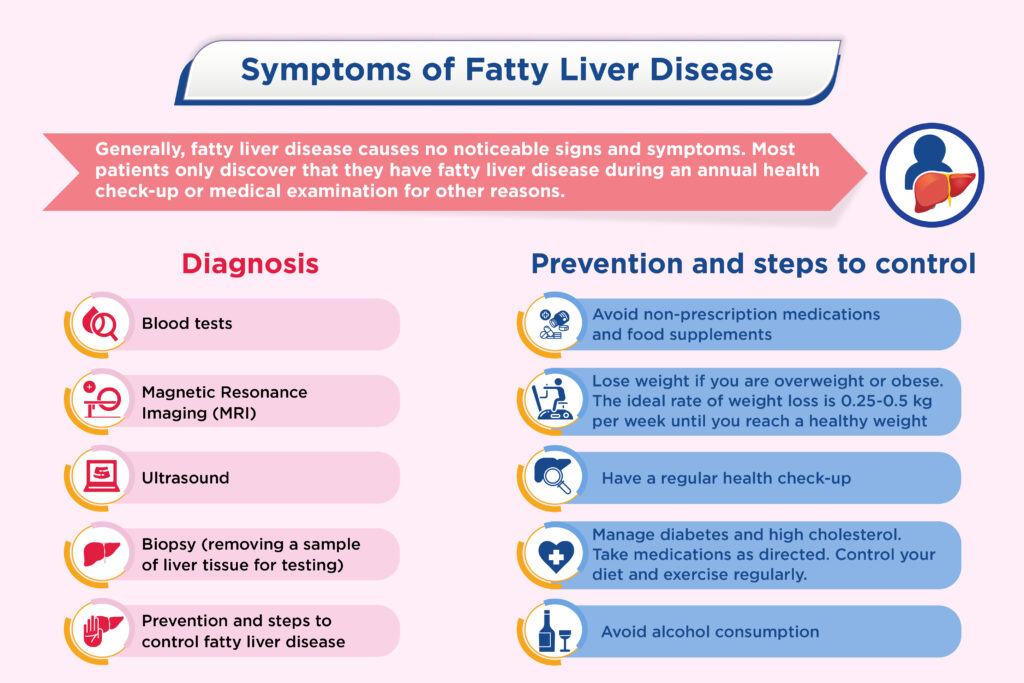Liver & Its Importance

Liver – The Body’s Mighty Filter
The liver is the second-largest organ in the body weighing about 1.5kg and consisting of 96% water stored in its cells. The liver is primarily responsible for regulating metabolism. It breaks down carbohydrates, fats, and proteins, converting them into usable energy or storing them for future use. Furthermore, the liver is responsible for more than 500 vital functions ranging from bile synthesis to the breakdown of harmful substances and toxins in the body.
Did you know?
The liver is the only organ in the body that can grow back. In fact, even if only 25% of it is still healthy, it can regenerate itself into a full liver again!
How liver damage happens
It is wrongly assumed that only alcohol causes liver damage. In reality, there are a wide variety of reasons other than alcohol. Understanding the primary cause is imperative for prevention, early detection, and effective management of liver disease. Some of the key risk factors include:
• Infection, mainly viral
• Alcohol consumption
• Obesity
• Diabetes type 2
• High Cholesterol levels
• Liver-toxic medication
• Genetic predisposition
• Tumors & Cancers
In most cases, liver damage begins with the development of a not-so-serious condition called Fatty Liver, which can gradually progress to liver disease.


Understanding Fatty Liver Disease
The liver is considered to be healthy when it has less than 5% fat. When the proportion of fat in the liver rises above 5%, the condition is called fatty liver.
The medical name of fatty liver is NAFLD or Non-Alcoholic Fatty Liver Disease.
Medically speaking, fat accumulation in the liver cells is known as Steatosis. Steatosis can lead to liver cell inflammation over time. This condition is known as Non-alcoholic Steatohepatitis (NASH).
Fatty liver (NAFLD) usually does not show any signs and symptoms and is often detected only when a blood test is done. This is also one of the main challenges in treating NAFLD. Because people are unaware, most fatty liver (NAFLD) cases go undetected till they progress to serious liver disease.
Little-known facts about NAFLD
1. Non-alcoholic fatty liver disease (NAFLD) affects 30 percent of the world population.1
2. Around 9% to 53% of the general population in India is suffering from NAFLD 2
3. What starts as a fatty liver may turn into a life-threatening condition called NASH or Non-Alcoholic Steatohepatitis (also called stage 2)
4. Obesity is the leading risk factor for NAFLD.
5. Up to 25% of people with NASH develop liver cirrhosis, and some need a liver transplant.
6. 1 out of 6 children have NAFLD
7. NAFLD is common in overweight and obese Indian children.
8. NASH is currently the second leading cause of Liver Transplant in men and the leading cause in women.


The Good news – NAFLD can be reversed
● Diet and exercise can slow the disease progression of NAFLD to NASH
● NAFLD is a reversible condition that can be resolved in the initial stages with lifestyle changes such as reducing weight and following a healthy diet
● The newer medicines are effective at reversing stages of NAFLD and NASH.